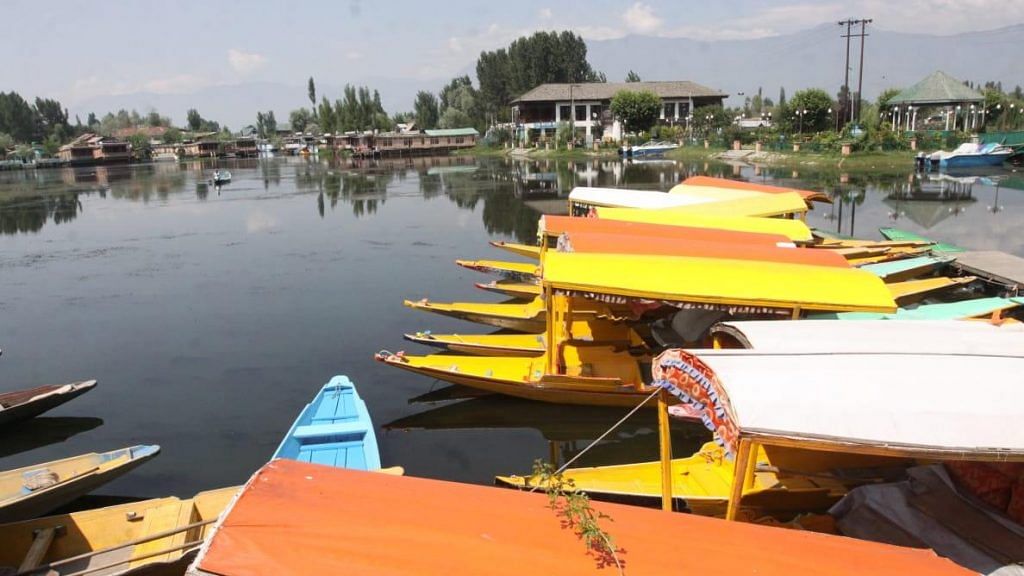As India is caught between two conflicting narratives on Kashmir – ‘all is well’ or ‘tragedy is unfolding’ – I hark back to my first visit to the Valley more than 50 years ago.
As a Second Lieutenant, I was on my first independent assignment as an umpire in the annual counter-infiltration exercise conducted in the Valley. Infiltration in December 1968 meant 400-500 strong columns of Pakistani regulars/irregulars exploiting the vast gaps, due to paucity of troops, along the Cease-fire Line (CFL), now the Line of Control.
The CFL was manned by 19 Infantry Division and the interior of the Valley was the responsibility of the Victor Force – an ad hoc division size force consisting of one brigade and 5-6 BSF battalions. The director of the counter-infiltration exercise was none other than Brigadier Z.C. Bakshi (later Lt Gen) whose brigade had captured the Haji Pir Pass in August 1965. The duration of the exercise was 10 days. After the coordinating conference, Brigadier Bakshi gave us another four days for ‘rest and refit’ (Army jargon for a paid holiday) for sight-seeing. Impetuously, I requested for another week as it was my first visit, which was granted.
For the next few weeks, I explored Kashmir, from Verinag (source of Jhelum) to Kupwara and Sonamarg to Gulmarg. The experience gave me an insight into the life in Kashmir.
Also read: How Kashmir’s getting by — dark humour, scars of a missed Eid & apples sold for a pittance
The question of identity & autonomy
Kashmiris are very conscious of their identity. It has less to do with religion, and more to do with culture. My first impression was that Kashmiris perceived the ‘special status’ as a way to preserve their identity and culture.
At that time, there was a deep resentment among Kashmiris over the arrest of Sheikh Abdullah in 1953 and the gradual dilution of the state’s autonomy.
Jamaat-e-Islami Kashmir, a religio-political organisation which advocated Kashmiri self-determination, was fast making inroads in the Valley. The Plebiscite Front patronised by Sheikh Abdullah, which called for a referendum under UN, was also gaining popularity.
The corruption and misrule under successive governments in the state only fuelled the demand for self-determination.
Chance encounter with Sheikh Abdullah
During my exploration of the Valley, I had a chance encounter with Sheikh Abdullah. I was buying apples at a wayside shop close to Dal Lake when the tall, well-dressed Abdullah came and stood next to me. I greeted him and we soon got talking. I enquired about his health and we discussed the larger political situation in the Valley. In between his ambiguous remarks, one comment stood out – “fortunes keep changing in politics, but the resentment among the people is only increasing”.
I reminded him about a reception he hosted for 1 Patiala (now 15 Punjab) in December 1948 when my father was the second-in-command. He immediately remembered – “Sukhdev (Brigadier Sukhdev Singh) Shamsher (Colonel Shamsher Singh) and Hazura (Major Hazura Singh). How are they?” With great pride, he said, “hum sabh sath, sath lade the (we all fought together)”.
Even as a 21-year-old it was evident to me that Sheikh Abdullah was no separatist (unlike the general impression in India then) and that as a nation we had politically failed to consolidate the integration of the Valley with India.
Also read: Why an SC judge’s dissent 43 years ago is relevant to Kashmir clampdown today
No signs of fundamentalism
There were no visible signs of fundamentalism in Kashmir. The congregations at the Sufi shrines were as large as those at the traditional mosques, and I saw many Hindus praying there. Muslims visiting Hindu temples was also a common sight, and tourism was booming in the state.
Army enjoyed people’s confidence
Security was a non-issue in Kashmir and I could travel anywhere, in uniform or casuals, without carrying a weapon.
The volunteers of the Jammat-e-Islami and the Plebiscite Front never missed an opportunity to stage protests, but their numbers were still small to make an impact.
In the absence of pucca roads, the Army was the largest employer, and enjoyed the confidence of the people.
Once en route to Chinamarg Gali (located at a height of 14,000 ft above sea level on the Pir Panjal range), my radio operator and I lost our way. At sunset, we stopped at a Bakarwal hut for directions. We realised that the men had taken the livestock for grazing and only two young women were present. Taking note of the delicate situation, I apologised and started walking back.
Such was the confidence of the people in the Army that the women walked up to us and said, “Bhai, kya baat hai (Brother, what’s the issue?)”
I explained the situation and the two women volunteered to guide us. It was dark but they walked with us for a kilometre to show us the way.
Also read: Three sacrifices the BJP must make to ‘fully integrate’ Kashmir with India
Betraying the trust
It should be clear that it is the political leadership in the Valley and at the Centre that has betrayed the trust of the Kashmiris. And, we in the rest of the country are only compounding the problem by the linking the fate of an entire region with a couple of hundred terrorists.
Lt Gen H S Panag PVSM, AVSM (R) served in the Indian Army for 40 years. He was GOC in C Northern Command and Central Command. Post retirement, he was Member of Armed Forces Tribunal. Views are personal.
